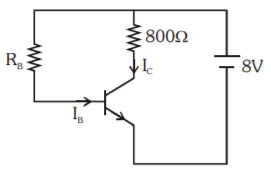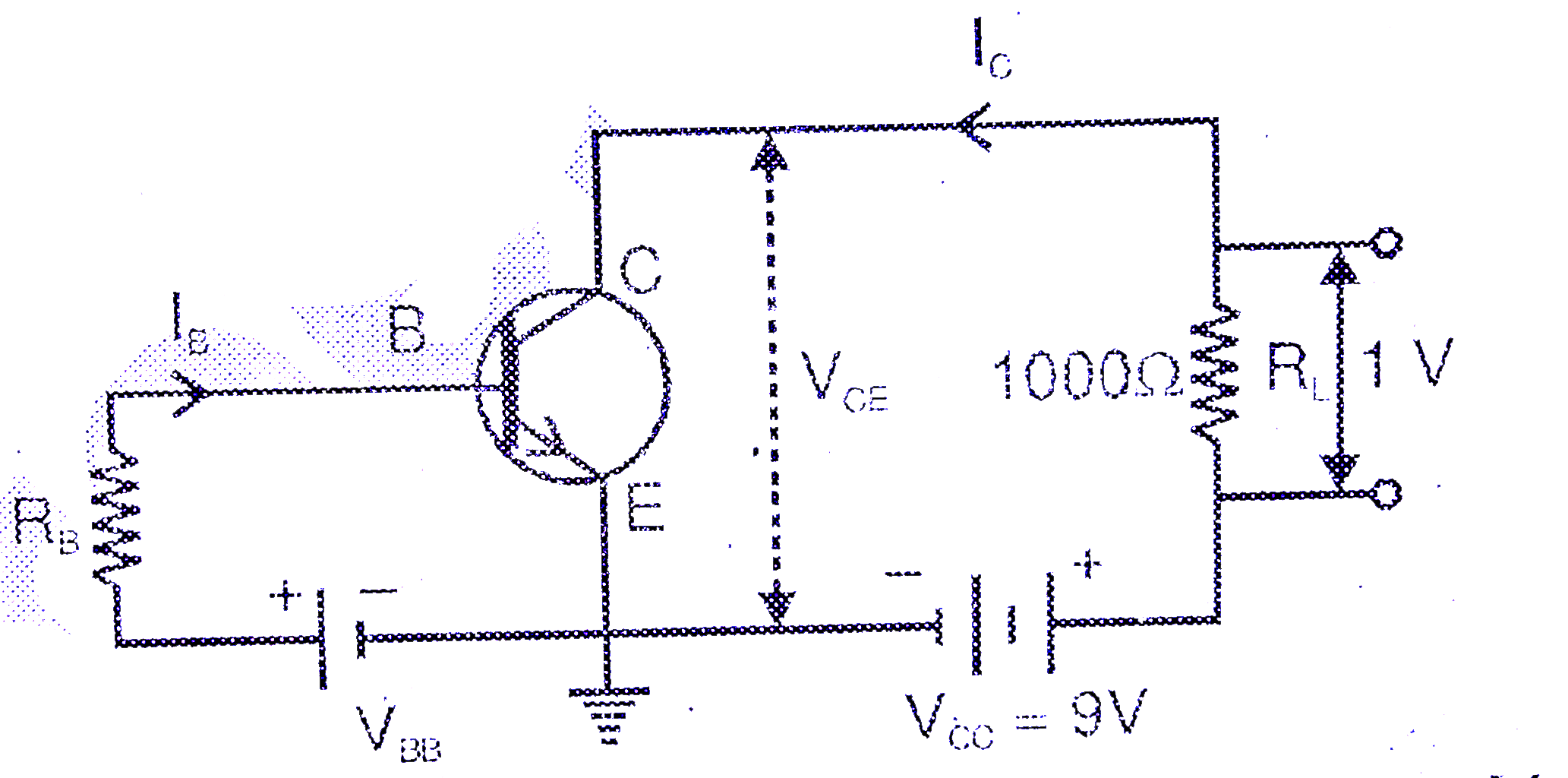A npn transistor is connectedin CEC in which collector voltage drop across load resistance (800 ohm) connected to collector circuit is 0.8V The collector current is 
2 mA
0.1 mA
1 mA
0.2 mA
The correct Answer is:C
Step by step video, text & image solution for A npn transistor is connectedin CEC in which collector voltage drop across load resistance (800 ohm) connected to collector circuit is 0.8V The collector current is by Physics experts to help you in doubts & scoring excellent marks in Class 12 exams.
Updated on:21/07/2023Topper's Solved these Questions
Similar Questions
An n - p- n transistor is connected in common - emitter configuraration in which collector supply is 8 V and the voltage drop across the load resistance of 800Ω connected in the collector circuit is 0.8 V . If current amplification factor is 25 , determine collector - emitter voltage and base current . If the internal resistance of the transistor is 200Ω , calculate the voltage gain and the power gain.
View SolutionAn n−p−n transistor is connected in common emiter configuration in which collector supply is 8V and the boltage drop across the load resestance of 800Ω connected in the collector circuit is 0.8V. If current gain factor is (25/26), determine the collector -emitter voltage and base current. if the internal resistance of the transistor is 200Ω. calculate the voltage gain and power gain.
View Solution
Knowledge Check
A npn transistor is connectedin CEC in which collector voltage drop across load resistance (800 ohm) connected to collector circuit is 0.8V The collector current is
 A0.1mAB1mAC0.2mAD2mA
A0.1mAB1mAC0.2mAD2mAAn N-P-N transistor is connected in common-emitter configuration in which collector supply is 8V and the voltage drop across the load resistance of 800Ω connected in the collector circuit is 0.8V. If current amplification factor is 25/26 (If the internal resistance of the transistor is 200Ω), the collector-emitter voltage, voltage gain and power gain are respectively.
A5.2V,1.86,3B6.2V,186,5.5C7.2V,3.86,3.698D4.91,3.15A n-p-n transisitor is connected in common emitter configuration in a given amplifier. A load resistance of 800Ω is connected in the collector circuit and the voltage drop across it is 0.8V. If the current amplification factor is 0.96 and the input resistance of the circuits is 192Ω, the voltage gain and the power gain of the amplifier will respectively be
A4,3,84B3,69,3.84C4,4dD4,3.69
A n-p-n transistor is connected in common emitter configuration in which collector supply is 9V and the voltage drop across the load resistance of 700Ω connected to the collector circuit is 0.7V. If the current amplification factor alpha is 25/26, determine collector emitter voltage and base current. If the input resistance of the transistor is 100Ω, calculate the voltage gain and the power gain.
View SolutionAn N-P-N transistor is connécted in common emitter contiguration in which collector supply is 9V and the voltage drop across the load resistance of 1000Ω connected in the collector circuit is 1V. If current amplification factor is (25/26), If the internal following options is incorrect.

View SolutionA n-p-n transisitor is connected in common emitter configuration in a given amplifier. A load resistance of 800Ω is connected in the collector circuit and the voltage drop across it is 0.8V. If the current amplification factor is 0.96 and the input resistance of the circuits is 192Ω, the voltage gain and the power gain of the amplifier will respectively be
View SolutionA npn transistor is connected in common emitter configuration in a given amplifier. A load resistance of 800Ω is connected in the collector circuit and the voltage drop across it is 0.8V. If the current amplification factor the voltage gain and the power gain of the amplifies will respectively be:
View SolutionA npn transistor is connected in common emitter configuration in a given amplifier. A load resistance of 800Ωis connected in the collector circuit and the voltage drop across 0.96 and the input resistance of the circuit is 192Ω, the voltage gain and the power gain of the amplifier will respectively be :
View Solution
